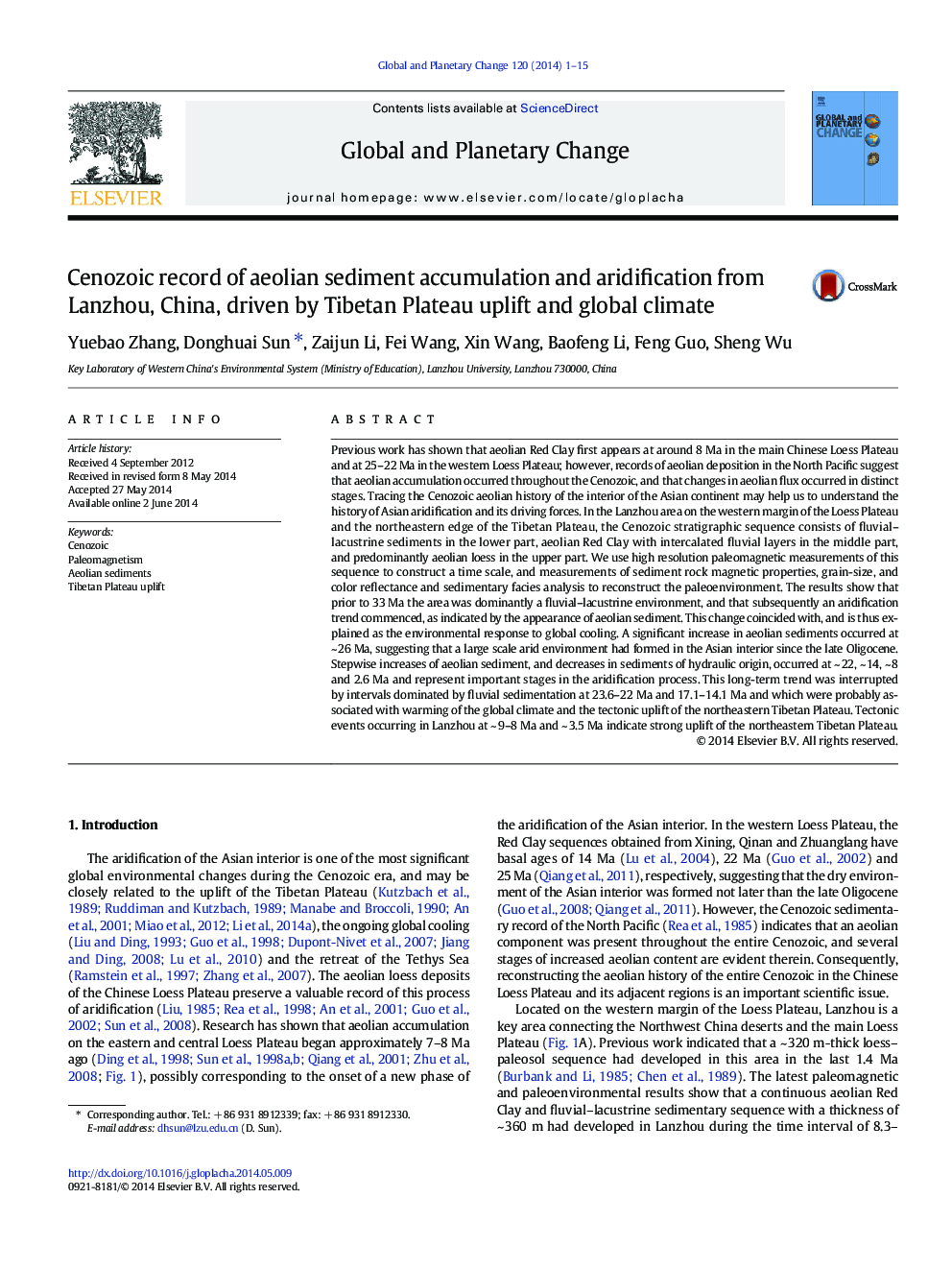| کد مقاله | کد نشریه | سال انتشار | مقاله انگلیسی | نسخه تمام متن |
|---|---|---|---|---|
| 4463406 | 1621661 | 2014 | 15 صفحه PDF | دانلود رایگان |
• Cenozoic aeolian accumulation history was reconstructed in Lanzhou basin.
• ~ 33, ~ 26, ~ 22, ~ 14, ~ 8 and 2.6 Ma were major drying stages during the Cenozoic.
• 23.6–22 Ma and 17.1–14.1 Ma were two warm-humid intervals in Lanzhou basin.
• Global cooling and Tibetan Plateau uplift correlate with the stepwise aridification.
• Strong uplift of the Lanzhou basin occurred at ~ 9–8 Ma and ~ 3.5 Ma.
Previous work has shown that aeolian Red Clay first appears at around 8 Ma in the main Chinese Loess Plateau and at 25–22 Ma in the western Loess Plateau; however, records of aeolian deposition in the North Pacific suggest that aeolian accumulation occurred throughout the Cenozoic, and that changes in aeolian flux occurred in distinct stages. Tracing the Cenozoic aeolian history of the interior of the Asian continent may help us to understand the history of Asian aridification and its driving forces. In the Lanzhou area on the western margin of the Loess Plateau and the northeastern edge of the Tibetan Plateau, the Cenozoic stratigraphic sequence consists of fluvial–lacustrine sediments in the lower part, aeolian Red Clay with intercalated fluvial layers in the middle part, and predominantly aeolian loess in the upper part. We use high resolution paleomagnetic measurements of this sequence to construct a time scale, and measurements of sediment rock magnetic properties, grain-size, and color reflectance and sedimentary facies analysis to reconstruct the paleoenvironment. The results show that prior to 33 Ma the area was dominantly a fluvial–lacustrine environment, and that subsequently an aridification trend commenced, as indicated by the appearance of aeolian sediment. This change coincided with, and is thus explained as the environmental response to global cooling. A significant increase in aeolian sediments occurred at ~ 26 Ma, suggesting that a large scale arid environment had formed in the Asian interior since the late Oligocene. Stepwise increases of aeolian sediment, and decreases in sediments of hydraulic origin, occurred at ~ 22, ~ 14, ~ 8 and 2.6 Ma and represent important stages in the aridification process. This long-term trend was interrupted by intervals dominated by fluvial sedimentation at 23.6–22 Ma and 17.1–14.1 Ma and which were probably associated with warming of the global climate and the tectonic uplift of the northeastern Tibetan Plateau. Tectonic events occurring in Lanzhou at ~ 9–8 Ma and ~ 3.5 Ma indicate strong uplift of the northeastern Tibetan Plateau.
Journal: Global and Planetary Change - Volume 120, September 2014, Pages 1–15
